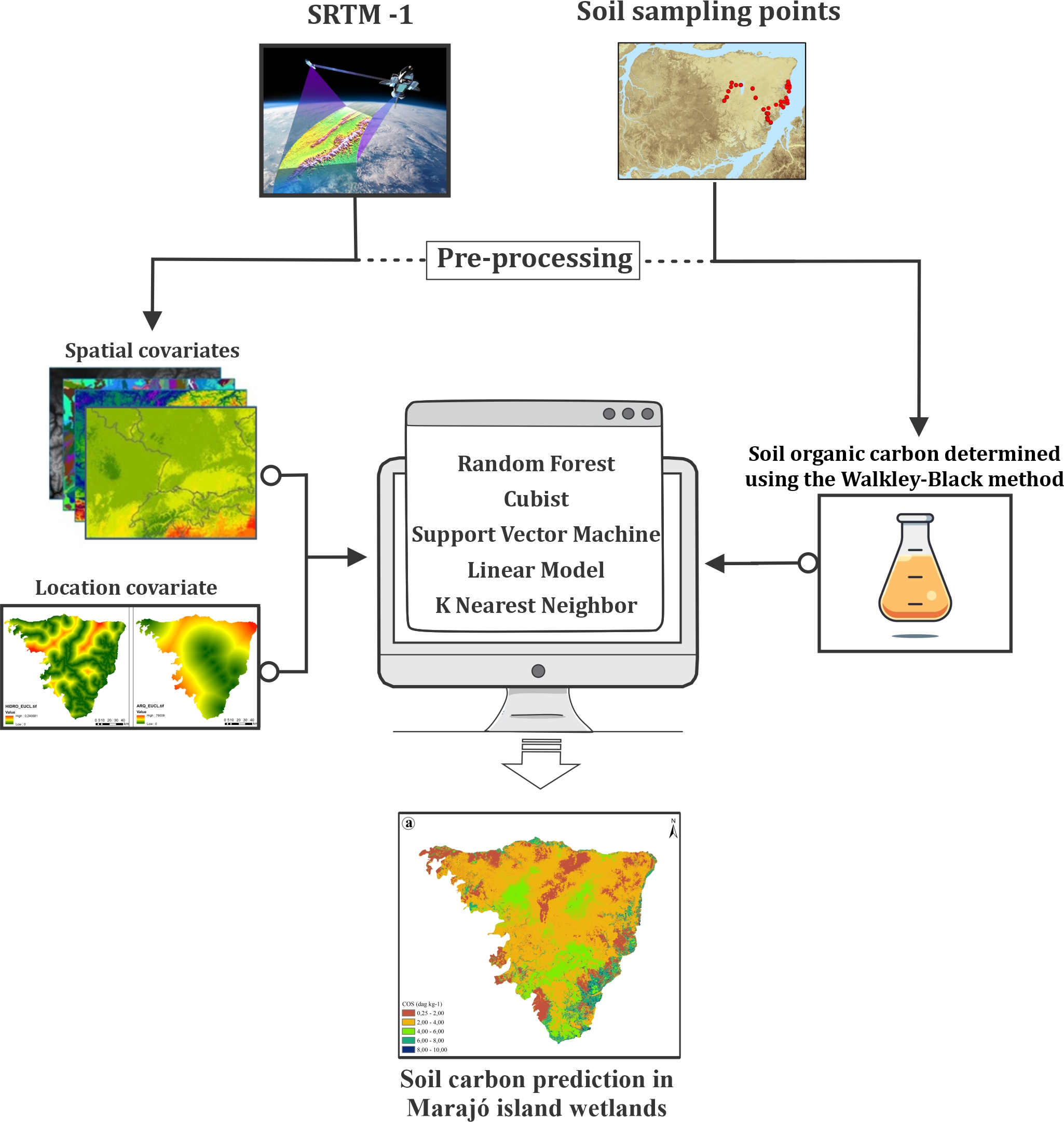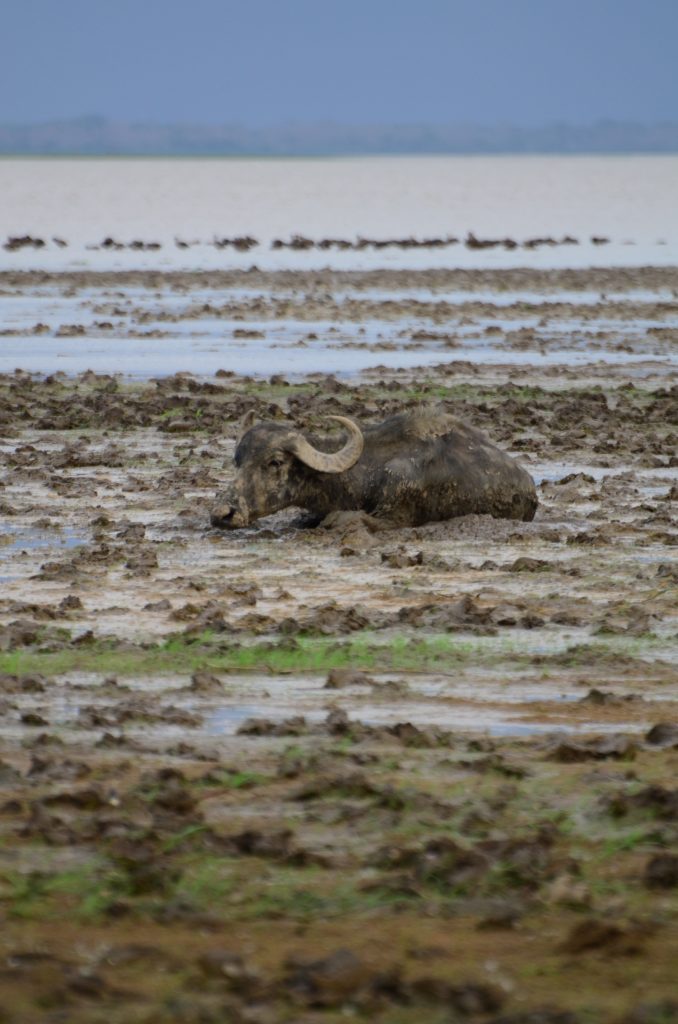Rev. Bras. Ciênc. Solo.2024;48:e0230162.
Soil carbon prediction in Marajó island wetlands
27/Aug/2024
DOI: 10.36783/18069657rbcs20230162
Graphical Abstract

Highlights
The study optimized the Cubist model for precise SOC prediction.
Reduced covariates increased efficiency in Marajó’s complex terrain.
Elevation and proximity to water were vital in SOC distribution.
Alluvial forests and mangroves stood out with the highest SOC concentrations.
ABSTRACT
Soil is an important carbon repository in terrestrial ecosystems, serving a fundamental role in the intricate cycling of this elemental component. Wetlands are crucial components of the global carbon cycle, playing a significant role in carbon sequestration due to their remarkable productivity and unique sedimentary structures. Our study focuses on the wetlands east of Marajó island, recognized as the largest fluvial-marine plain in South America. In this study, we applied a methodological framework to optimize SOC content prediction in the wetlands of Marajó island using readily available environmental covariates. We collected and analyzed 81 soil samples from the most representative geoenvironments on the island at a layer of 0.00-0.20 m. Our database included vegetation indices, morphometric maps, and covariates based on distance from water bodies and archaeological sites. We tested five machine learning algorithms – Cubist, Linear Model, Random Forest, K Nearest Neighbor, and Support Vector Machine – to obtain the best prediction performance. Cubist model demonstrated the highest performance for training (R2 = 0.483) and testing (R2 = 0.505) datasets, making it the optimal choice for SOC prediction in the topsoil. The most important covariates selected by Cubist using recursive feature elimination were digital elevation model, topographic heterogeneity index, vertical distance between the summit and base of the slope, and Euclidean distance from water bodies. Geoenvironments characterized by dense alluvial rainforest with palms on Plinthosols and Gleysols, mangroves with Gleysols, and coastal muddy plains exhibited the highest SOC content in the topsoil.
233

